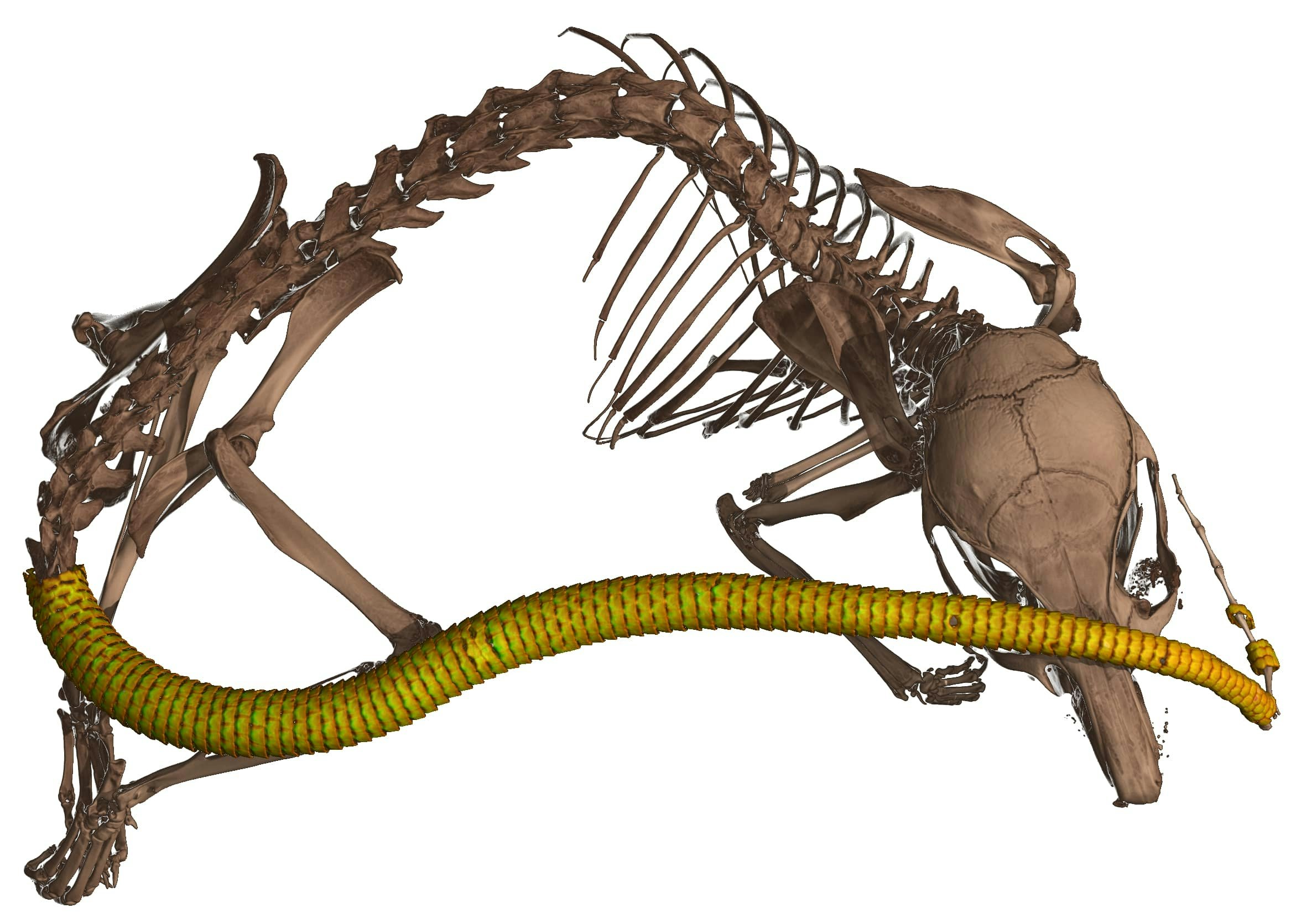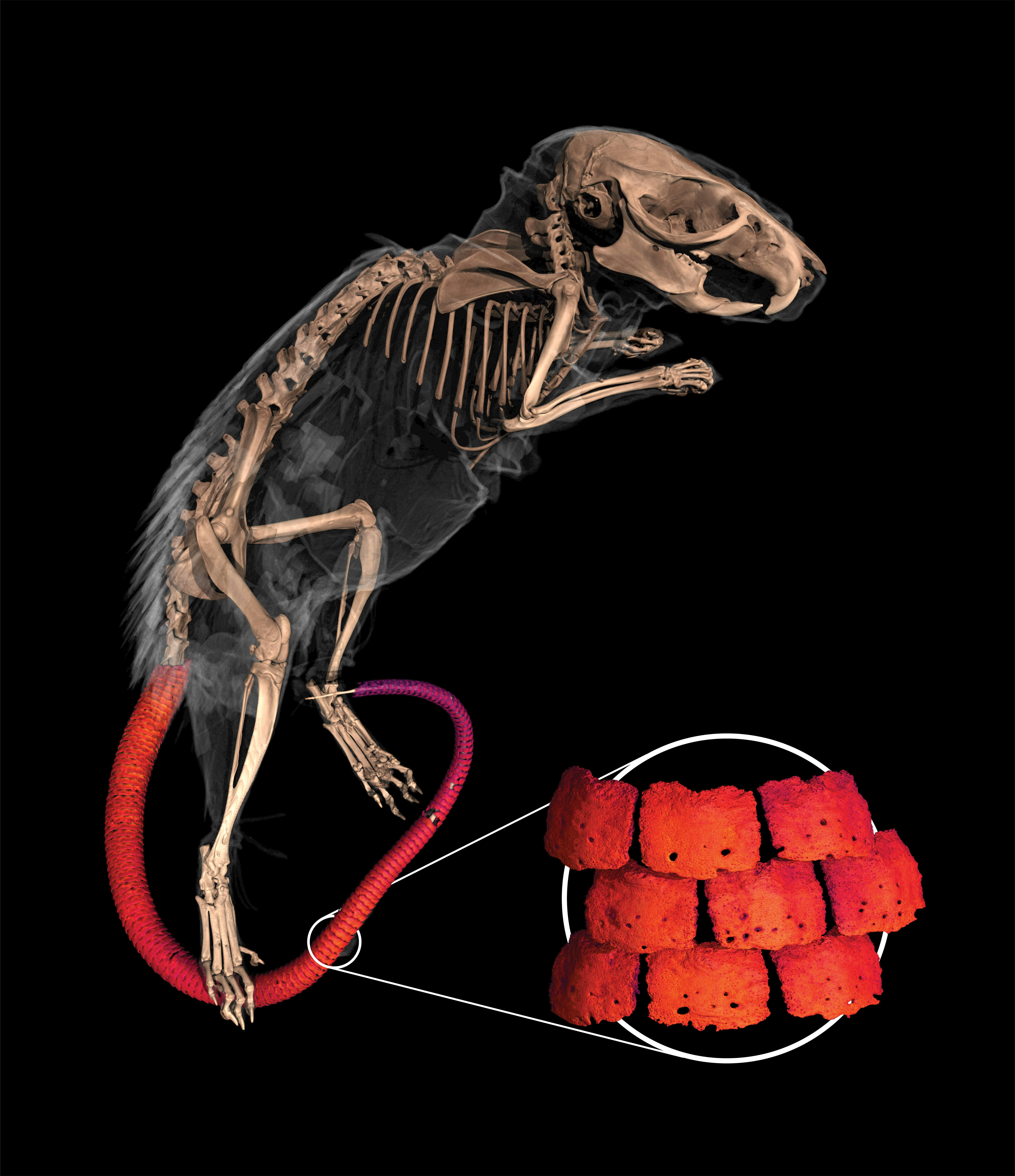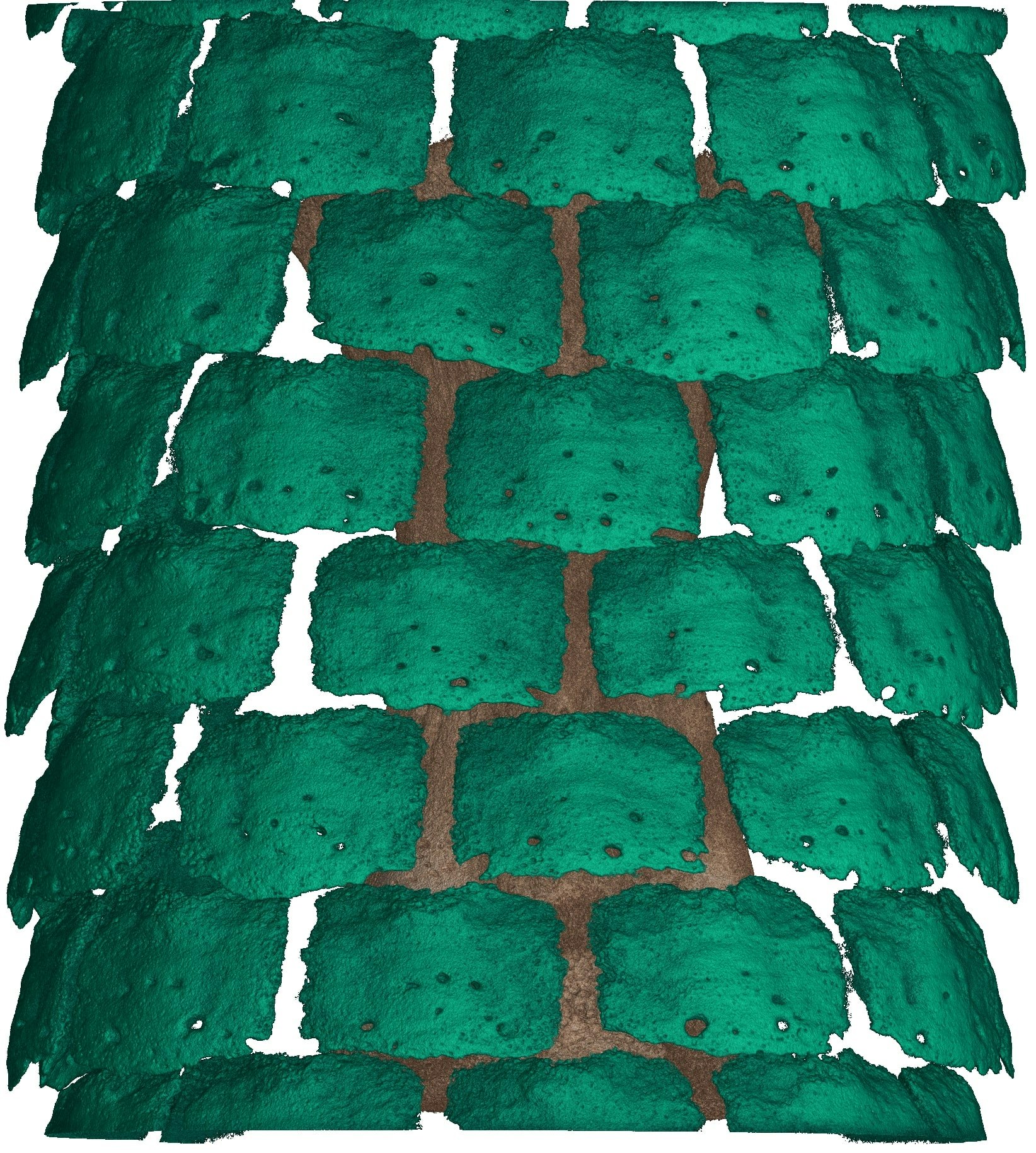
Mice aren’t supposed to have lizard tails, which is exactly why Edward Stanley balked when he saw a computerized tomography (CT) scan that revealed what looked like bony plates in the tail of an African spiny mouse specimen. Bony plates like this only crop up in the tails of lizards, turtles, and crocodiles. The only mammal with these plates is the armadillo.
Stanley, a herpetologist and director of digital imaging at the Florida Museum of Natural History, had been scanning these mice as part of a massive project called oVert that encompasses every genus of every vertebrate. It turned out that Malcolm Maden, a biology professor at the University of Florida, had long been fascinated by the mouse’s ability to regenerate skin, hair, and skeletal muscle, which one of his former postdocs discovered 10 years ago.
As a result of this coincidence, Stanley and Maden’s lab collaborated on a paper published today in the journal iScience, breaking down the genes that allow Acomys to create an armored tail.

A peculiar tail
Between this CT scan from Stanley and lab work from Maden’s team, we’ve learned that the spiny mouse is the only other modern mammal besides the armadillo to possess bony plates in its tail, known as osteoderms. As luck would have it, they were both at Florida institutions.
“Just a few yards away was Ed discovering these amazing bony plates,” Maden told Inverse.
Maden’s lab then performed RNA sequencing on the spiny mouse and identified the top 20 genes that control cell function to produce more or less of the substances associated with osteoderms. Upon further investigation, they also found that these bony plates were not present at the far end of a newborn’s tail. They were, however, developed in the part of its tail connected to the rest of its body. So they pursued the question of what genes regulated the development of these bony plates.

Will humans ever have bone armor?
This finding introduces an astonishing question of how the spiny mouse became one of the few mammals to possess this defense mechanism. It’s not that millions of years ago, a mouse and a lizard had a baby; rather, evolutionary pressure favored these mammals’ ability to use their tails as weapons and regenerate their skin.
“We can bridge this huge evolutionary gap,” Maden says. “It's a beautiful little system against predation.” He’s excited to see this genetic network weaving over evolutionary time across species.
Spiny mice, moreover, can regrow lost tails as part of their talent, which captivates Stanley. “Once you lose something, it's very hard to re-evolve it,” Stanley tells Inverse. “It's a big question in evolutionary biology that I think we can start tackling.”
Maden’s team analyzed osteoderm tissue as well as regular skin tissue to see genetically what was at work. They isolated the genes involved in creating these bony plates in non-bony tissue.
Stanley points out that any animal with a skull technically has the ability to create these bony plates because skulls come from dermal bone or bone borne from the skin. He calls them demato cranial bones. However, in most creatures, that ability isn’t expressed anywhere else except in the skull.

Seeking the crux
The next question is about what Maden calls the temporal and positional regulation of these genes. In other words, what triggers gene expression for bone derived from skin, why only in the tail, and why only at certain developmental phases?
“Nobody knows anything about shape or position in development, it's just unbelievable,” Maden says.
Maden hopes that one day he’ll be able to exert enough control over these genes that he can create a bony-plated lab mouse. A sci-fi version of this discovery may hint at bony-plated humans, but for now, the most relevant questions pertain to rodent genetics and evolution.







